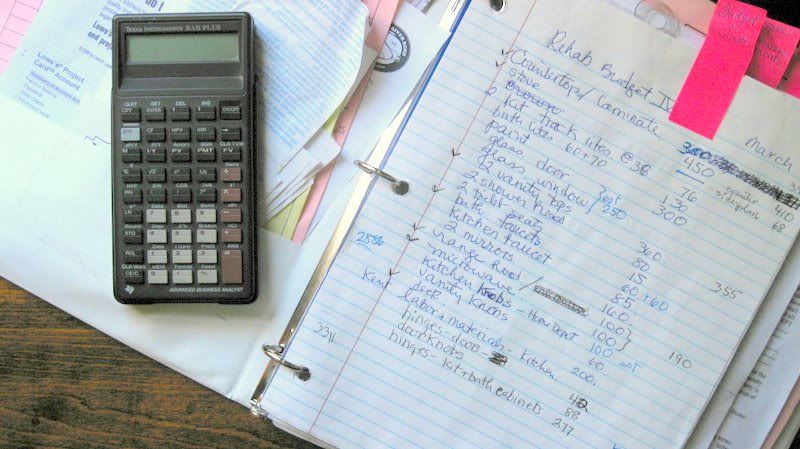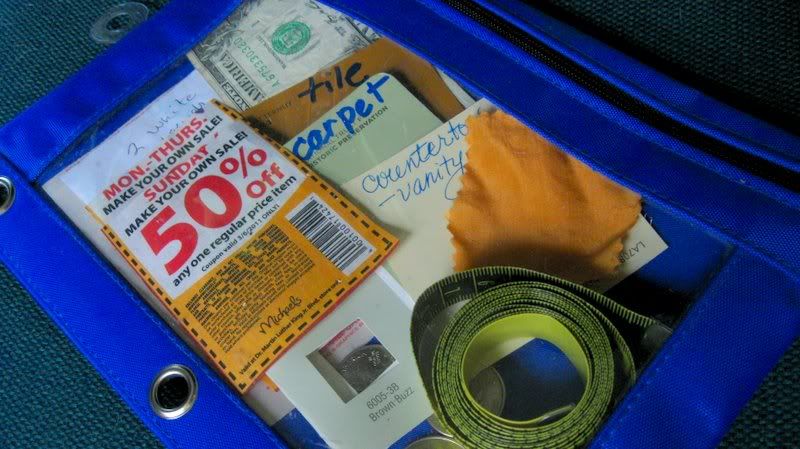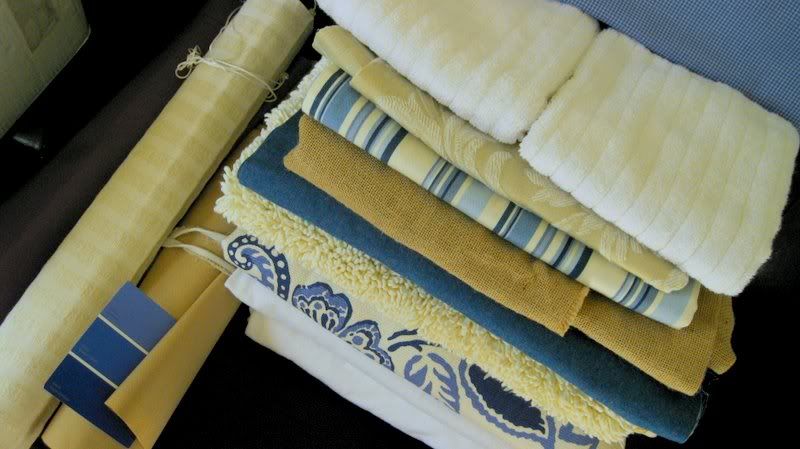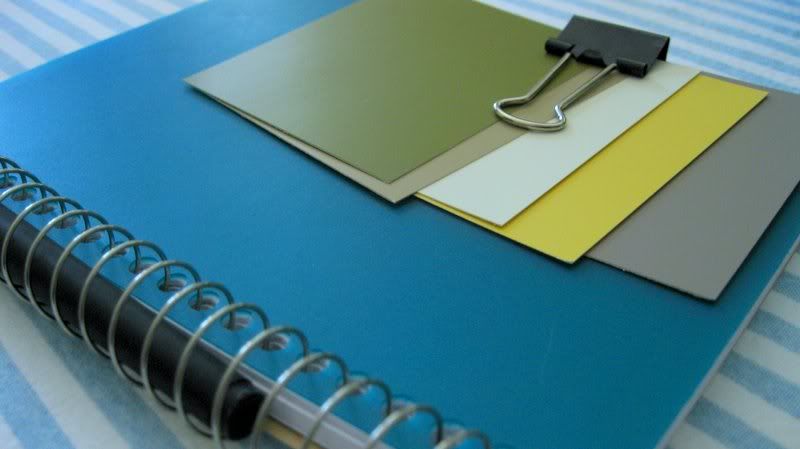If you're staging a home, the sooner you get your ducks in a row, the better. Here's my short list of what those ducks should look like. These are the tools and techniques that work for me.
- Binder for organizing your project. I don't care if they are old school. I love a good ole looseleaf notebook with some pockets to hold receipts that will help with record keeping and at tax time, and in case I have returns. I usually set up one section for the budget, adding update pages as the project progresses. I keep a ledger-like section for itemizing actual expenses. I like a section of blank pages for sketching ideas whenever they come to me, and for taping pieces of fabric, color samples, catalog pages, and tear sheets from magazines. Finally, I keep plenty of lined paper for to-do lists.
- Space for getting your stuff together. Never has the phrase "Staging Area," seemed more fitting. I want to be able to see samples and acquisitions at a glance. You can call it a life-size sample board. Sometimes it seems there isn't room for storing all that's necessary until the time is right to begin actual staging. I always try to make room. It's only a temporary mess.
- Shopping kit. Doesn't that sound like fun? I keep a notebook in my purse for shopping lists as the project moves along, and I keep a thrifting list of what I need to look for when I am at second hand stores. The notebook includes measurements of rooms and windows. The kit should always contain small bills and coins. When you show up at an early morning tag sale with just a check book and credit card, you are not making friends with the seller. Second hand sales often require cash. A tape measure is also an essential. You never know when you'll have to decide if curtains on sale are long enough, that lampshade is the perfect height, or a table is going to crowd your dining room.
- Fabric in your colors. One of the reasons I like to paint a house on the market all one color on interior walls is that furnishings are interchangeable from room to room. Sometimes a shower curtain becomes fabric for pillow covers, or a blanket morphs into draperies. Placing fabric remnants, towels, curtains and other soft furnishings in one place keeps me on track, reminds me what's missing, and spurs creative uses for them. Keeping the fabrics near the staging area is ideal.
- Color chips in the palette of the moment. These are my references when I'm out in the world. No one can remember colors exactly. If you match a color chip to a countertop or flooring material, you will then have a portable sample of these immovable items with you at all times.
- Large picture frames that I can fill. I keep these all in one place. They wait there for the day when they can be matched with the right artwork. I always have a selection of simple and ornate frames.
- Camera or iphone. Where would we be without our cameras? I never leave home without my digital. And extra batteries. Sometimes inspiration strikes when I see a particular retail display or someone's garden. I might see an idea worth hacking in a store or home. Photographing a room helps you see what needs tweaking. And taking photos will help you see how your home will appear in your MLS listing. Your photos might be better than your realtor's, in which case you can ask that they be used in your listing.
Arm yourself with the appropriate tools and you'll not only do a more creative and thorough job of staging your home, but you're more likely to be on schedule, and within budget. You might even have fun!
To make the task of staging your own home more rewarding and less stressful, download my eBook, DIY Home SagingTips To Sell Your Home Fast and For Top Dollar. It comes with a money back guarantee.








No comments:
Post a Comment